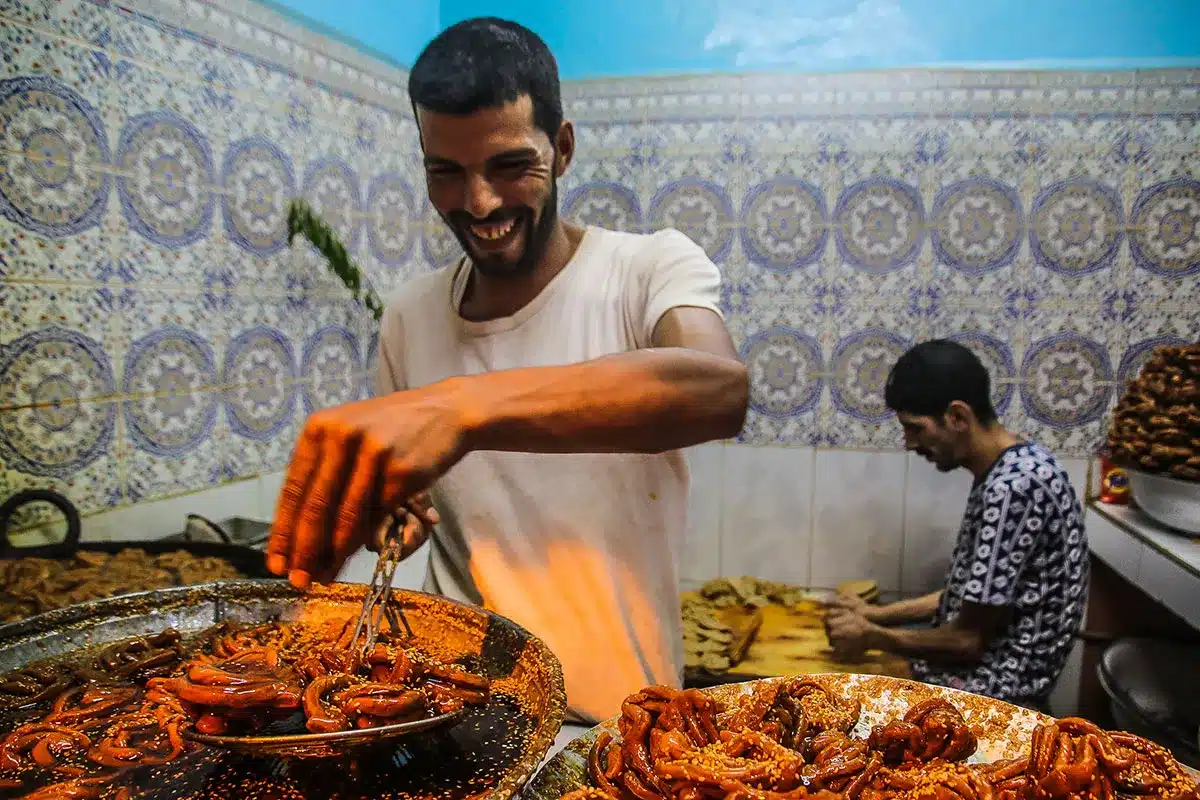Visit Morocco in December: Weather, Tips, & things to do
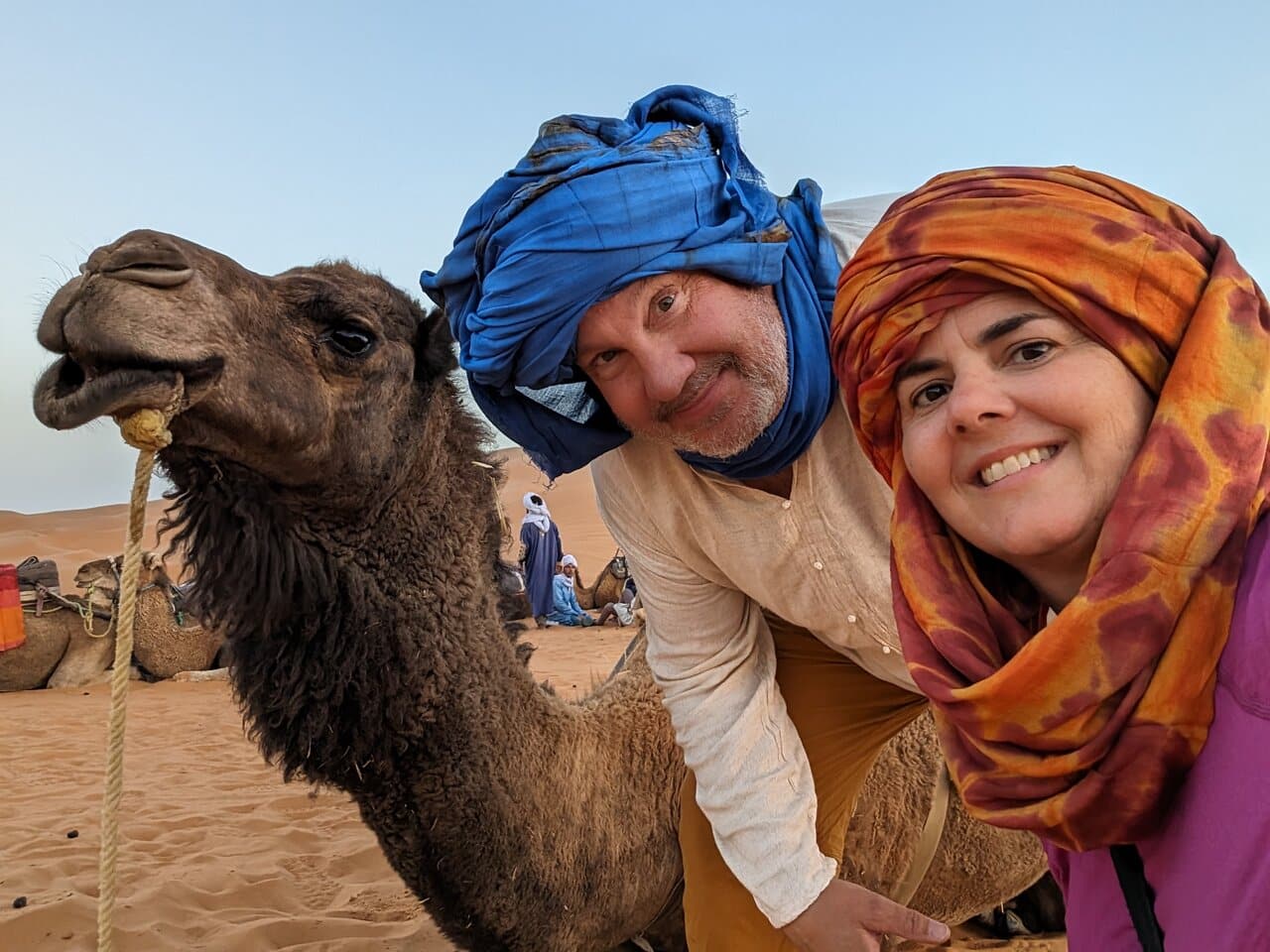
Visit Morocco in December, and you’ll discover a country full of contrasts, where mild winter sunshine meets snow-capped peaks and lively cities. December is an excellent time to explore Morocco’s imperial cities, enjoy the tranquility of the desert, or experience the festive atmosphere leading up to the New Year.
While Morocco remains a popular destination, December sees fewer crowds compared to the peak spring and summer months, especially in the early part of the month. Outside of the holiday season, accommodation prices can be significantly lower, and travel feels more relaxed.
1. Visit Morocco in December: Understanding the Weather in Morocco

Visit Morocco in December and enjoy mild winter temperatures, making it a perfect time to explore the country’s diverse landscapes. Compared to colder regions in Europe and North America, Morocco offers comfortable weather with minimal rainfall, creating ideal conditions for travelers looking to discover its rich culture and natural beauty.
In northern cities like Tangier and Tetouan, daytime temperatures average around 16°C (61°F), with only occasional rainfall. The coastal regions, including Casablanca and Rabat, are slightly warmer, with average highs of 18°C (64°F) and dry conditions. Inland cities like Marrakech and Fes experience pleasant daytime temperatures of around 21°C (70°F), though nights can be much cooler. In the southern regions, such as Ouarzazate, daytime temperatures can reach up to 25°C (77°F), but the desert nights bring a noticeable drop in temperature.
December sees a moderate number of visitors in Morocco, with an increase during the Christmas holidays. Marrakech and Ouarzazate are especially popular winter destinations, offering cultural experiences and historical sites without the intense summer heat. A must-visit in December is the Taourirt Kasbah in Ouarzazate. This ancient earthen fortress stands in the heart of the city, providing breathtaking views of the surrounding Atlas Mountains. Walking through its narrow corridors and intricately designed rooms offers a glimpse into Morocco’s fascinating history.
2. What to Wear When You Visit Morocco in December
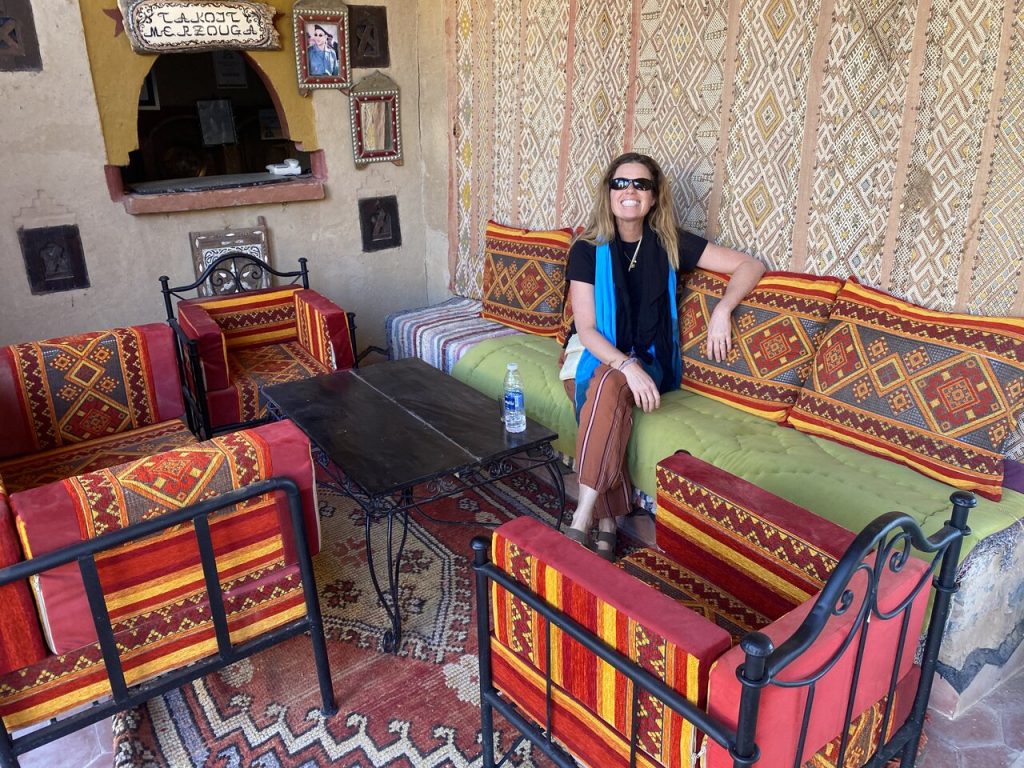
Layering is key to staying comfortable in Morocco during December. The days are mild, but the nights can be quite chilly, especially in the mountains and desert. Light, breathable fabrics like cotton and linen are perfect for daytime, while long-sleeved shirts and blouses offer both sun protection and cultural respect.
As the evening temperatures drop, a warm sweater, cardigan, or jacket will be essential. Wool or cashmere layers work well, especially if you’re heading to the mountains or spending time outdoors at night. Scarves and shawls are great additions—not only do they keep you warm, but they also serve as stylish accessories and modest coverings when visiting religious or traditional sites.
Dressing for Different Regions in December
Morocco’s weather varies across different regions, so packing appropriately will help you stay comfortable throughout your trip.
- Atlas Mountains: Expect cold temperatures, particularly at night. If you’re visiting or planning a trek, bring warm layers, a thick jacket, and thermal clothing to stay cozy in the crisp mountain air.
- Coastal Cities (Essaouira, Agadir, Casablanca): The weather is mild, but coastal winds can make it feel cooler. A light windbreaker or a warm jacket is useful when exploring the seaside.
- Marrakech & Other Inland Cities: Days are still warm, but nights are noticeably cooler. A medium-weight jacket or stylish shawl is great for evenings out. If you’re dining in upscale restaurants or staying in elegant riads, consider packing a smart outfit such as a nice dress or a collared shirt with stylish shoes.
- Desert & Ouarzazate: While the days are pleasant, desert nights can be very cold. Pack warm layers, including a fleece or insulated jacket, if you plan to experience a desert camp or sunrise camel ride.
Comfortable walking shoes are a must, especially in cities with cobbled streets like Fes and Essaouira, or if you plan to explore Morocco’s natural landscapes.
3. Modesty and Cultural Etiquette When You Visit Morocco in October
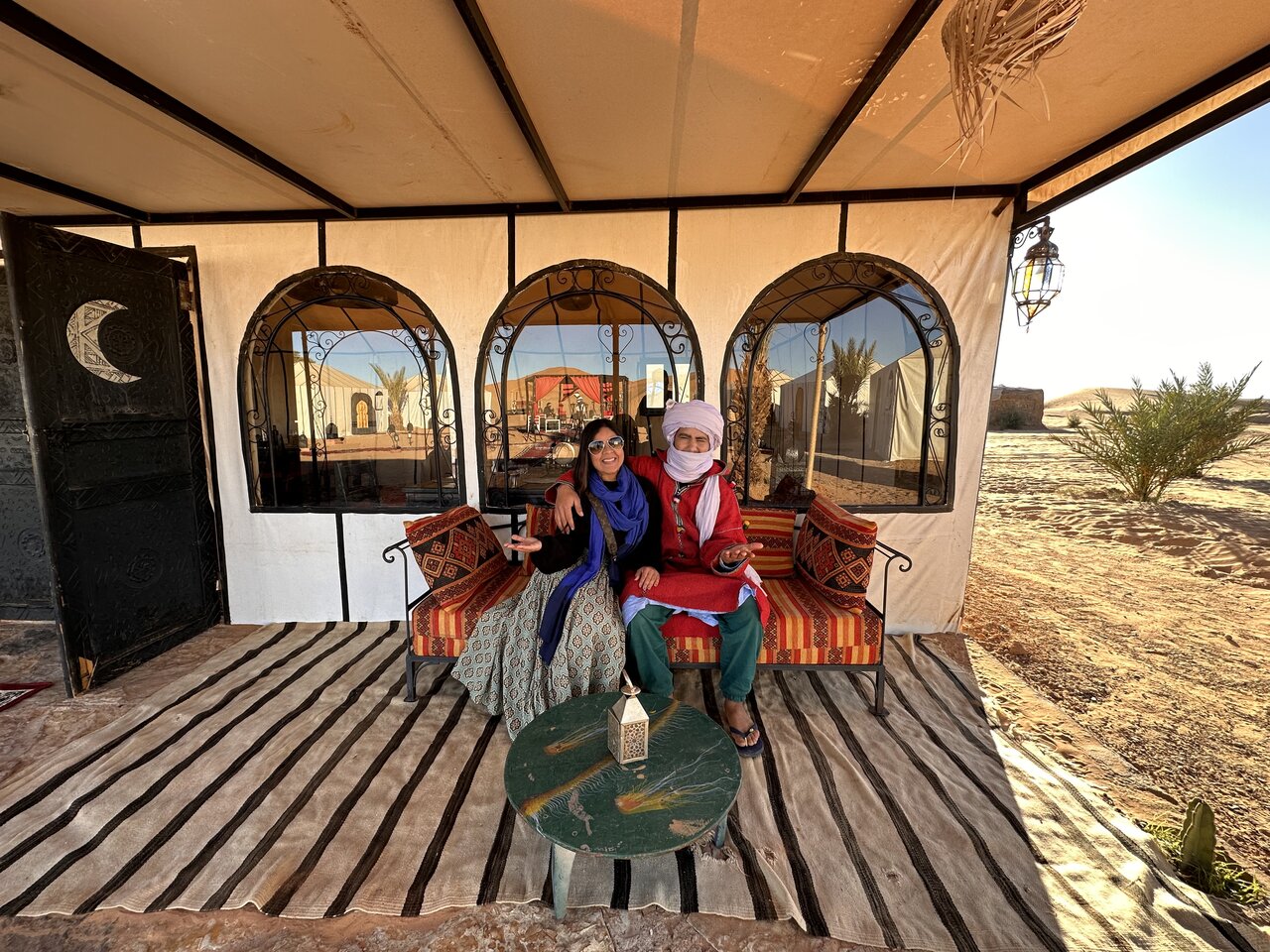
Morocco is a predominantly Muslim country with conservative dress norms, especially in rural areas and religious sites. Respecting local customs ensures a more immersive and positive travel experience.
- For Women: It’s recommended to cover shoulders and knees by wearing long skirts, dresses, or loose-fitting pants paired with blouses or t-shirts. While Morocco is used to tourists, dressing modestly is appreciated, particularly in smaller towns.
- For Men: Avoid tank tops or shorts in conservative areas. Opt for lightweight trousers and shirts to stay both comfortable and respectful in public spaces.
Visiting Religious Sites in Morocco:
When entering mosques or other sacred places, dress appropriately. Women should cover their heads with a scarf, and men should wear long pants and shirts with sleeves. Carrying a pashmina or sarong is useful for quickly adjusting your outfit when needed.
Respecting Moroccan cultural norms doesn’t mean sacrificing comfort—with the right balance, you can dress both practically and respectfully while exploring the country.
4. Visit Morocco in December: A Month of Tranquility and Unique Experiences
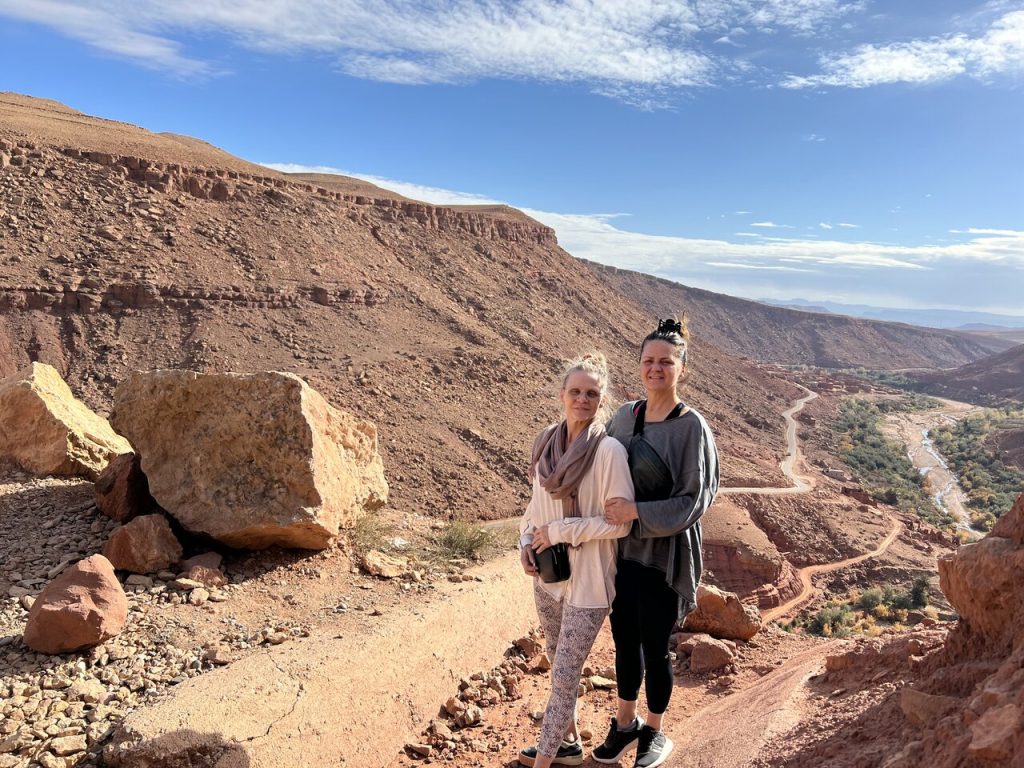
December in Morocco offers a refreshing blend of mild winter sunshine, festive energy, and diverse landscapes waiting to be explored. With cooler temperatures, it’s a great time to visit the imperial cities without the intense summer heat, wander through vibrant souks, and admire the stunning architecture of ancient medinas in Fes and Marrakech. The crisp air makes exploring the lively squares, hidden riads, and colorful spice markets even more enjoyable.
A trip to the Sahara Desert in December is nothing short of magical. The scorching summer temperatures are gone, making camel treks and desert camp stays comfortable. Nights are chilly but perfect for stargazing under crystal-clear skies, wrapped in warm Berber blankets by the campfire. For those who love scenic landscapes, the High Atlas Mountains take on a breathtaking charm with their snow-capped peaks. This is an excellent time for easy hikes through Berber villages, where you can warm up with a glass of mint tea while learning about local traditions.
The Atlantic coast remains a great option for a relaxed getaway. Essaouira’s fresh sea breeze, Agadir’s long sandy beaches, and Dakhla’s ideal kitesurfing conditions make December a fantastic month for coastal exploration. Seafood lovers can enjoy freshly caught delicacies while watching the sunset over the ocean.
For a truly unique experience, a visit to the saffron fields of Taliouine or the date farms of the Ziz Valley allows travelers to connect with Morocco’s agricultural traditions. The film studios of Ouarzazate also provide a fascinating insight into Morocco’s role in Hollywood blockbusters and historical epics.
As the holiday season approaches, Morocco’s cities and villages come alive with a festive spirit. From the glowing lantern-lit medinas to intimate live music performances in traditional riads, December is a time to slow down, soak in the culture, and enjoy the beauty of Morocco in a quieter, more intimate setting.
5.Visit Morocco in December: Best Family-Friendly Activities

December is a fantastic month for family travel in Morocco, with cooler weather and fewer crowds. Families can enjoy exciting outdoor adventures, hands-on cultural experiences, and hidden gems beyond the usual tourist spots. Here are more unique Morocco family activities that kids and parents will love.
1.Hot Air Balloon Ride Over Marrakech
Soar above the breathtaking landscapes of Morocco in a hot air balloon, offering unforgettable sunrise views over the Marrakech countryside and the Atlas Mountains. This is an incredible experience for kids, as they get to see Morocco from a bird’s-eye view and even receive a small “flight certificate” after landing.
Why it’s great for families?
- Exciting but calm and safe for children
- Unique way to see Morocco’s diverse landscapes
- Includes a traditional Moroccan breakfast after landing
2. Boat Ride in Bin El Ouidane Lake
Located between Marrakech and Fez, Bin El Ouidane Lake is a stunning hidden gem perfect for families. A boat ride across the lake offers serene views of the Atlas Mountains, and kids can enjoy fishing, swimming, or even spotting local wildlife. Some family-friendly lodges in the area offer kayaking and paddleboarding as well.
Why it’s great for families?
- Peaceful and relaxing compared to busy tourist areas
- Fun water activities in a safe environment
- Stunning mountain and lake views
3. Meet & Feed Goats Climbing Argan Trees
A quirky and unique experience that kids will love—visiting goats that climb argan trees in the Souss Valley near Agadir. Families can watch these adorable goats balancing on tree branches, learn about how argan oil is made, and even feed the goats at some local farms.
Why it’s great for families?
- A fun and surprising activity that kids love
- Educational—learn about argan oil production
- Perfect for taking unique family photos
4. Traditional Bread-Making with Berber Families
Instead of just tasting Moroccan bread, why not learn to make it from scratch? In Berber villages near Marrakech or in the High Atlas, families can join a local family in their home to knead and bake bread in a traditional clay oven. Kids will love getting their hands messy and seeing their homemade bread come to life.
Why it’s great for families?
- Hands-on, interactive experience
- A great way to connect with local communities
- Kids enjoy eating what they helped make
5. Ride a Traditional Blue Fishing Boat in Essaouira
Essaouira’s blue fishing boats are an iconic part of its harbor, and families can hop aboard a local fisherman’s boat for a short ride along the coast. Kids can help pull in fishing nets, learn about the fresh seafood market, and even spot seagulls and dolphins.
Why it’s great for families?
- Safe and easygoing for all ages
- Kids love seeing how fish are caught
- Perfect for combining with a fresh seafood meal after
6. Fossil Digging & Dinosaur Museum in Azilal
For families with little explorers, fossil hunting in Azilal is an incredible adventure. Morocco is famous for its prehistoric sites, and kids can dig for fossils or visit dinosaur footprint sites in the High Atlas Mountains. Some local guides offer Morocco family-friendly fossil tours, where kids get to keep a small fossil as a souvenir. Don’t miss a visit to the Azilal Dinosaur Museum, where children can learn about Morocco’s fascinating prehistoric past through interactive exhibits and life-sized dinosaur displays.
Why it’s great for families?
- Educational and exciting for young explorers
- Kids can touch real fossils and dinosaur prints
- A rare, off-the-beaten-path experience
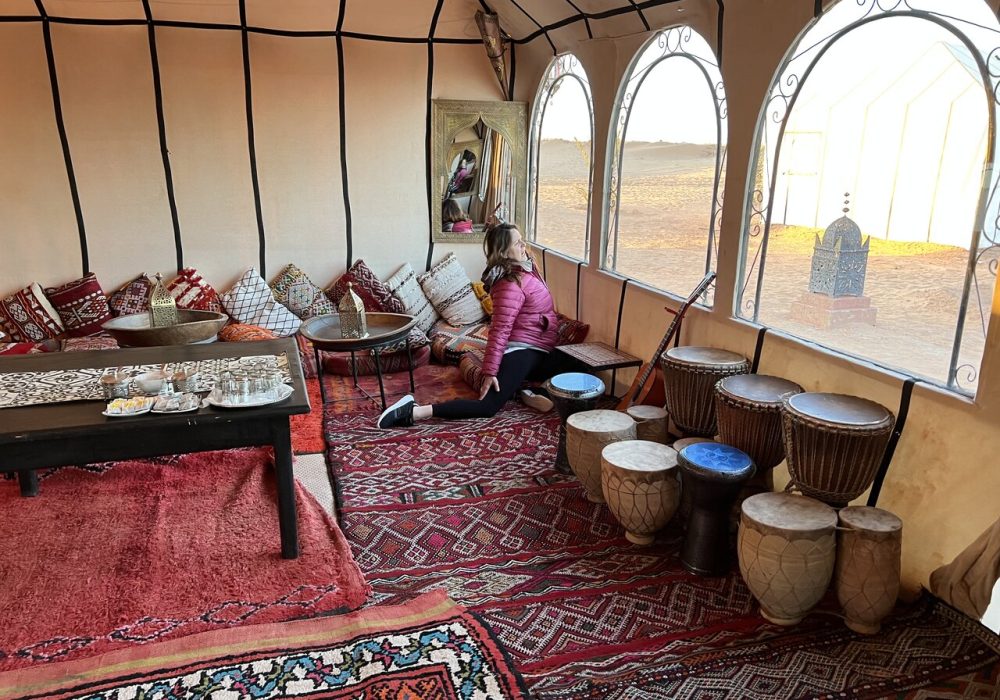
6. Visit Morocco in December – How to Avoid Crowds & Enjoy a Relaxed Trip
December is one of the best times to visit Morocco, with cooler weather, beautiful landscapes, and fewer tourists compared to the peak summer months. While it’s not as crowded as spring, some popular destinations can still get busy, especially on weekends. Here are a few simple ways to enjoy a more relaxed trip while avoiding crowds.
1. Choose Less-Touristy Cities & Hidden Gems
Instead of sticking to Marrakech and Fes, explore Morocco’s lesser-known gems. Taroudant, known as “Little Marrakech,” has beautiful souks and fewer tourists. Tafraoute in the Anti-Atlas Mountains offers stunning landscapes and Berber culture without the crowds. Coastal towns like Mirleft and Oualidia provide a peaceful beach escape.
2. Visit Popular Places at Off-Peak Hours
If you’re set on visiting famous spots like Jemaa el-Fnaa in Marrakech or Chefchaouen’s blue streets, go early in the morning or late in the afternoon. The light is better for photos, and you’ll avoid the midday rush. Markets and souks are busiest around midday, so exploring in the morning gives you a calmer experience.
3. Explore the Countryside & Villages
October is a great time for day trips to places that many travelers skip. Visit the Aït Bouguemez Valley, known as the “Happy Valley,” for stunning mountain scenery and traditional Berber life. Take a walk through the Fint Oasis near Ouarzazate, where palm groves and mud-brick villages feel untouched by time.
4. Enjoy Outdoor Activities in Quiet Places
Instead of the crowded Sahara dunes in Merzouga, try the Erg Chigaga dunes for a more remote desert experience. If you love hiking, the Middle Atlas Mountains offer breathtaking trails without the high foot traffic of the High Atlas. The Dades and Todra Gorges are also stunning and far less crowded than Marrakech.
5. Book Riads & Hotels Away from Tourist Centers
For a peaceful stay, choose a riad or guesthouse in a quieter neighborhood rather than right in the heart of the medina. In Marrakech, for example, staying in Kasbah or Palmeraie gives you more space and tranquility while still being close to the action.
6. Visit Museums & Palaces in the Afternoon
Most travelers visit cultural sites in the morning, so go in the late afternoon for a quieter experience. The Bahia Palace, El Badi Palace, and the Saadian Tombs in Marrakech are much more enjoyable when they’re not packed with tour groups.
7. Take the Scenic Route
Skip highways and explore Morocco by scenic coastal or mountain routes. A road trip along the Atlantic Coast from Essaouira to Mirleft offers breathtaking ocean views with small, charming villages along the way. The drive from Marrakech to Ouarzazate via the Tizi n’Test Pass is quieter than the usual Tizi n’Tichka route and equally stunning.
7. Dressing Modestly in Morocco

Morocco is a predominantly Muslim country where conservative dress is the norm, especially in rural areas and religious sites. Modesty is important for both men and women. Women should aim to cover their shoulders and knees, opting for long skirts, dresses, or loose-fitting pants paired with blouses or t-shirts. Men should avoid wearing tank tops or shorts in public, particularly in more traditional regions.
When visiting religious sites such as mosques, dressing respectfully is essential. Women should cover their heads with a scarf, while men should wear long pants and shirts with sleeves. A lightweight scarf or pashmina can be useful for quickly adjusting your outfit when needed.
Clothing for Men in Morocco in December
For men, dressing modestly is just as important, though expectations are generally less strict than for women. Long pants and shirts with sleeves are ideal for maintaining a respectful appearance. Lightweight fabrics like cotton work well for daytime warmth, while a sweater or light jacket will keep you comfortable in cooler evenings. Tank tops are best avoided as they are not considered appropriate in public spaces.
If dining at upscale restaurants or visiting modern neighborhoods in cities like Marrakech, men can wear a collared shirt with well-fitted trousers for a polished look. Jeans and t-shirts are acceptable for casual outings as long as they are neat and undamaged. When traveling to rural areas, dressing more conservatively is recommended to align with local customs.
Clothing for Women in Morocco in December
Layering is key to staying comfortable throughout the day. Lightweight cotton tops and dresses are great for daytime activities, but it’s wise to carry a sweater or jacket for the cooler evenings. A scarf or shawl is a must-have accessory—it provides sun and wind protection while adding a stylish touch to your outfit.
When visiting mosques or religious sites, make sure to cover your shoulders, arms, and legs. A pashmina can also be used to cover your head when required. Avoid wearing revealing clothing like short skirts, shorts, or tank tops, as they can attract unwanted attention. Instead, choose comfortable and modest outfits such as long dresses, ankle-length skirts, or loose-fitting pants. These not only respect local customs but also offer practical protection from the sun. Simple jewelry can enhance your outfit without being too flashy.
9. Traveling Sustainably in Morocco in December

Visiting Morocco in December is a wonderful opportunity to explore the country while making mindful choices that benefit the environment, local communities, and cultural heritage. Sustainable travel is about respecting traditions, reducing waste, and supporting responsible tourism initiatives. Here’s how you can make a positive impact while enjoying your journey.
1. Choose Eco-Friendly Accommodations
Opt for eco-lodges, riads, or guesthouses that focus on sustainability. Many accommodations in Morocco are taking steps to reduce water and energy consumption, source local ingredients, and support the local economy.
- Look for eco-certified hotels or traditional riads that use solar energy.
- Stay in rural guesthouses that support local families and communities.
- Avoid large resorts that consume excessive resources, especially in dry regions.
2. Support Local Communities
September is a great time to explore Morocco’s countryside and smaller towns, where tourism directly benefits local communities. Instead of staying in big-chain hotels, support locally-owned businesses by:
- Booking tours with local guides rather than large tour companies.
- Shopping at local markets instead of touristy souvenir shops.
- Eating at family-run restaurants that use fresh, seasonal ingredients.
3. Reduce Plastic Waste
Plastic waste is a growing issue in Morocco, especially in tourist-heavy areas. You can help by reducing your plastic footprint:
- Bring a refillable water bottle—many hotels and cafés offer filtered water.
- Use reusable shopping bags instead of plastic ones at souks and markets.
- Say no to plastic straws and unnecessary packaging when ordering food.
4. Respect Natural Environments
Whether you’re visiting Morocco’s beaches, mountains, or desert, be mindful of your impact on the environment.
- Stick to marked trails when hiking to prevent soil erosion.
- Avoid littering—carry your trash with you if bins aren’t available.
- Don’t disturb wildlife or buy products made from endangered species.
5. Use Public or Sustainable Transport
Instead of relying on private cars, opt for eco-friendly transportation whenever possible:
- Take the train between major cities—it’s a comfortable and low-impact way to travel.
- Use local buses or shared taxis to reach smaller towns.
- Walk or cycle in pedestrian-friendly areas like Chefchaouen and Essaouira.
6. Experience Authentic & Responsible Tourism
Some experiences in Morocco are designed purely for tourists and may not be culturally or ethically responsible. Choose activities that respect local traditions:
- Visit cooperatives where women create handmade rugs, pottery, and textiles.
- Avoid unethical animal tourism, such as forced snake-charming or underfed camel rides.
- Engage in responsible cultural experiences, like cooking classes with locals or calligraphy workshops.
7. Be Mindful of Water Consumption
September is a dry month in Morocco, and water shortages are common in many regions. Reduce your water usage by:
- Taking shorter showers and reusing towels at hotels.
- Avoiding excessive laundry requests in accommodations.
- Not wasting drinking water—only take what you need.
8. Travel Off the Beaten Path
Instead of visiting only the most touristy areas, explore lesser-known places to help distribute tourism more evenly.
- Consider smaller mountain villages instead of just Imlil.
- Visit less crowded beaches instead of only staying in Agadir.
- Stay in hidden oasis valleys to support rural communities.
9. Learn & Respect Local Culture
A key part of sustainable travel is respecting Moroccan culture and traditions. Take time to learn about local customs:
- Dress modestly in rural areas to show respect.
- Learn a few Arabic or Berber phrases to connect with locals.
- Follow etiquette at markets and religious sites by asking before taking photos.
10. Give Back in a Meaningful Way
Instead of giving money to child beggars or unregulated charities, support established organizations that promote long-term community development.
- Donate to local NGOs that focus on education, healthcare, or environmental conservation.
- Buy from fair-trade cooperatives that empower local artisans.
- Volunteer responsibly—look for ethical programs that truly benefit locals.
Visit Morocco in December for a Peaceful and Authentic Experience
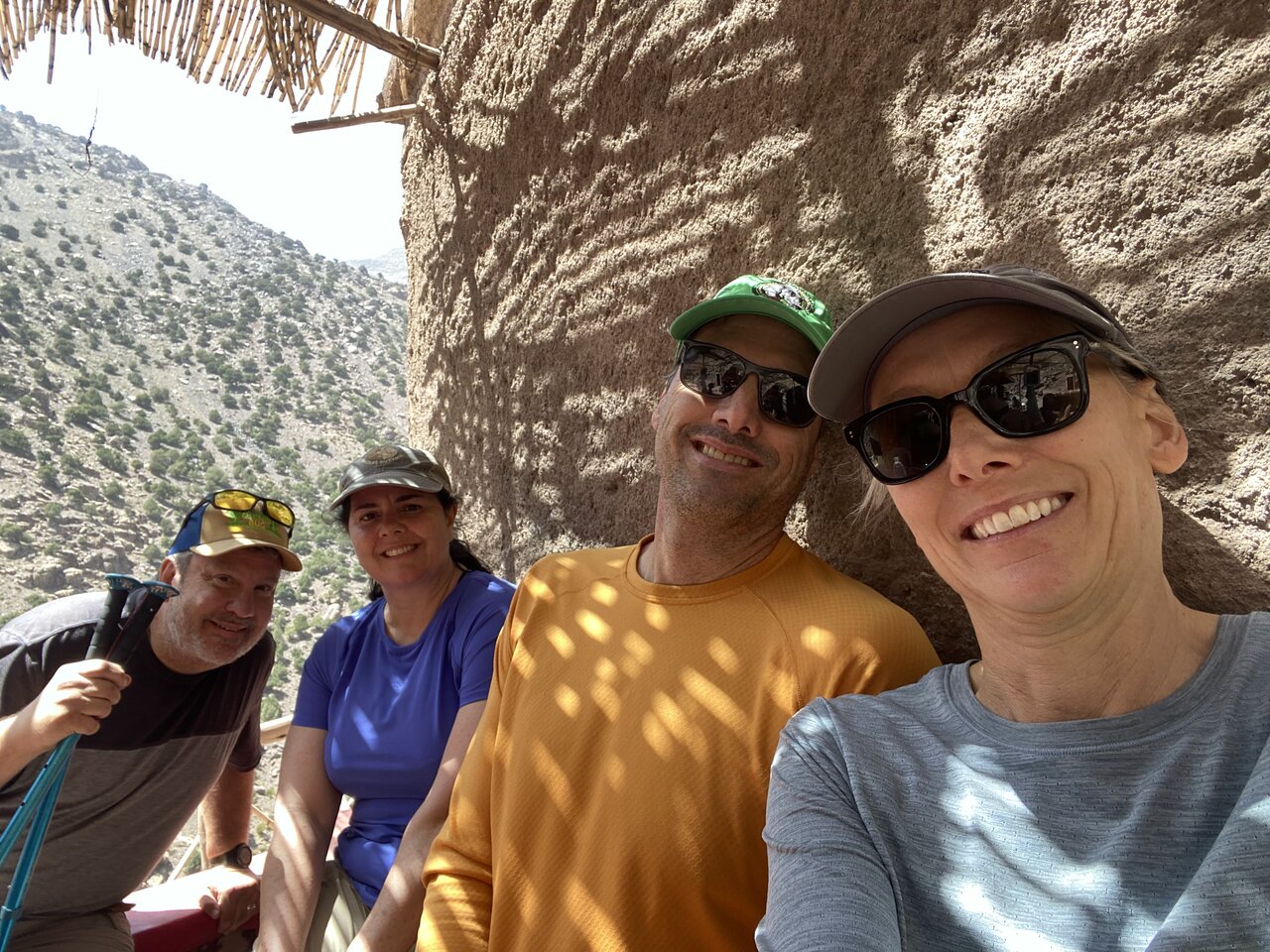
December is a wonderful time to visit Morocco, with cooler yet pleasant temperatures, fewer crowds, and a unique seasonal charm. The crisp air makes exploring the medinas of Marrakech and Fes more enjoyable, while the desert offers mild days and starry nights, perfect for a comfortable and magical overnight stay in the dunes.
This is also the season of changing landscapes, from the snow-capped peaks of the High Atlas Mountains to the serene coastal towns that remain warm and inviting. The quieter atmosphere in December allows for a more intimate experience, whether you’re savoring a fresh seafood meal by the Atlantic, discovering hidden kasbahs, or enjoying a peaceful hike through Berber villages.
For a journey that blends adventure, culture, and relaxation, December is an ideal time to experience Morocco. Let Original Travels design a seamless and immersive trip tailored just for you. Reach out to start planning your Moroccan getaway.



